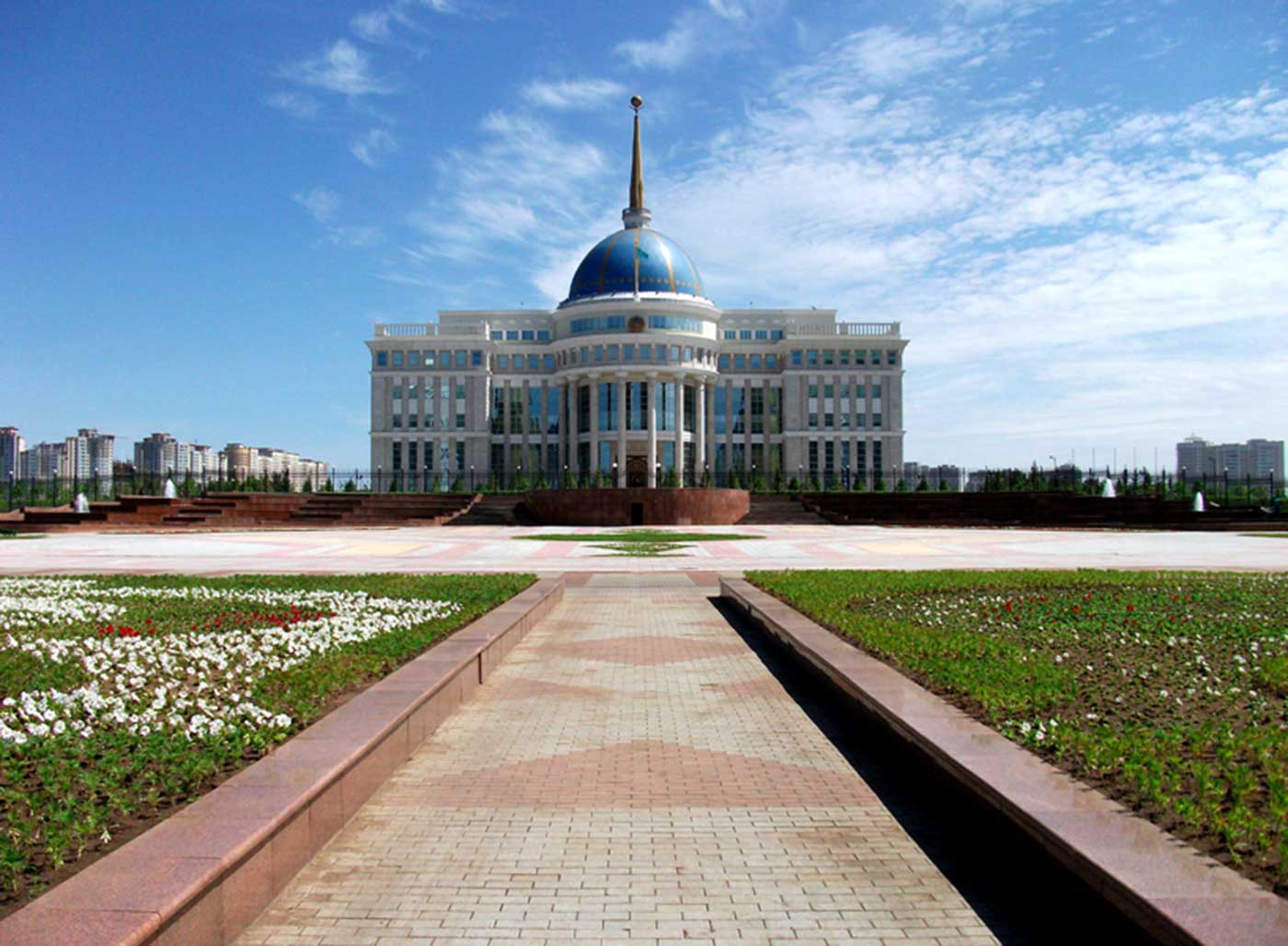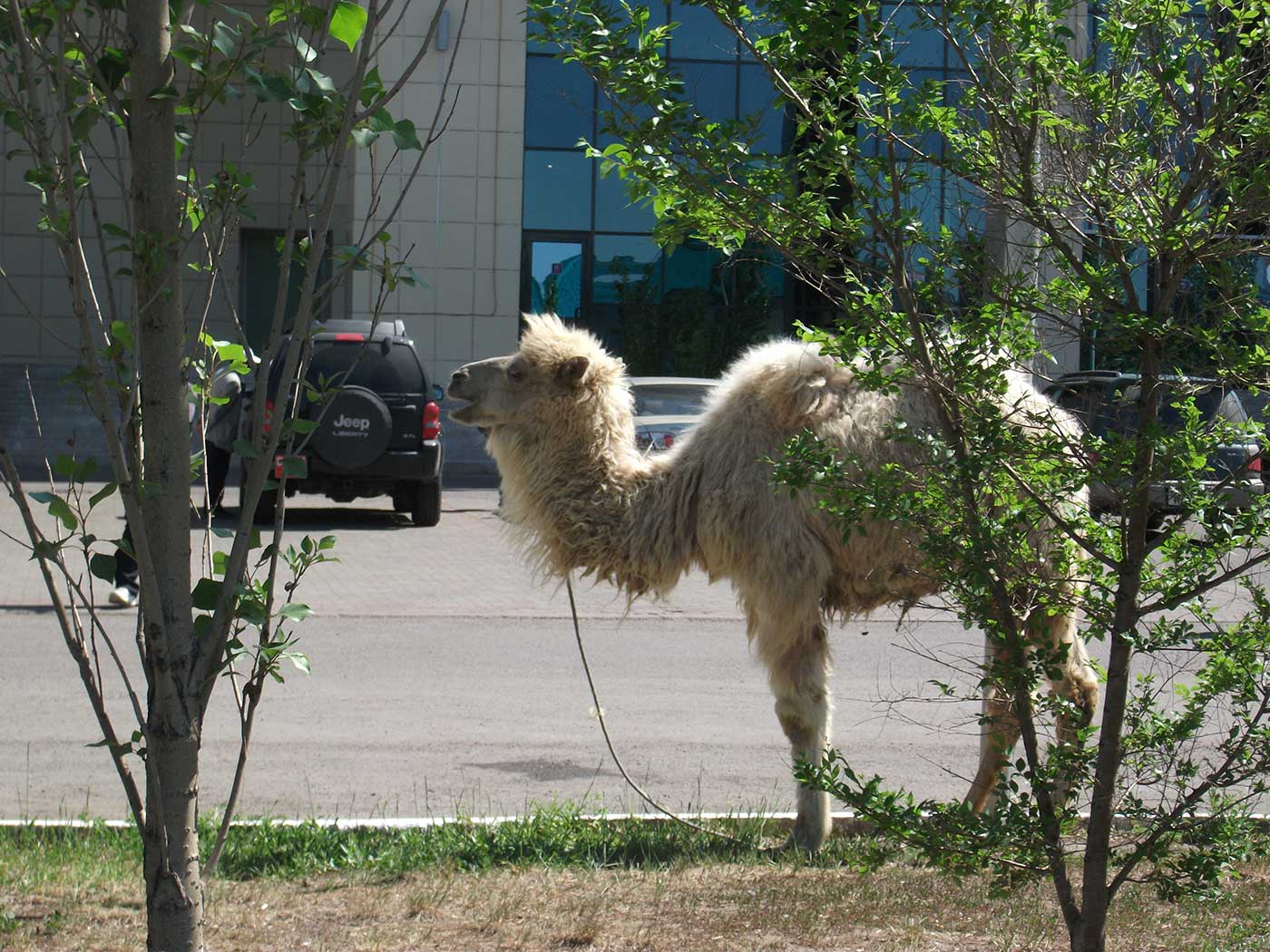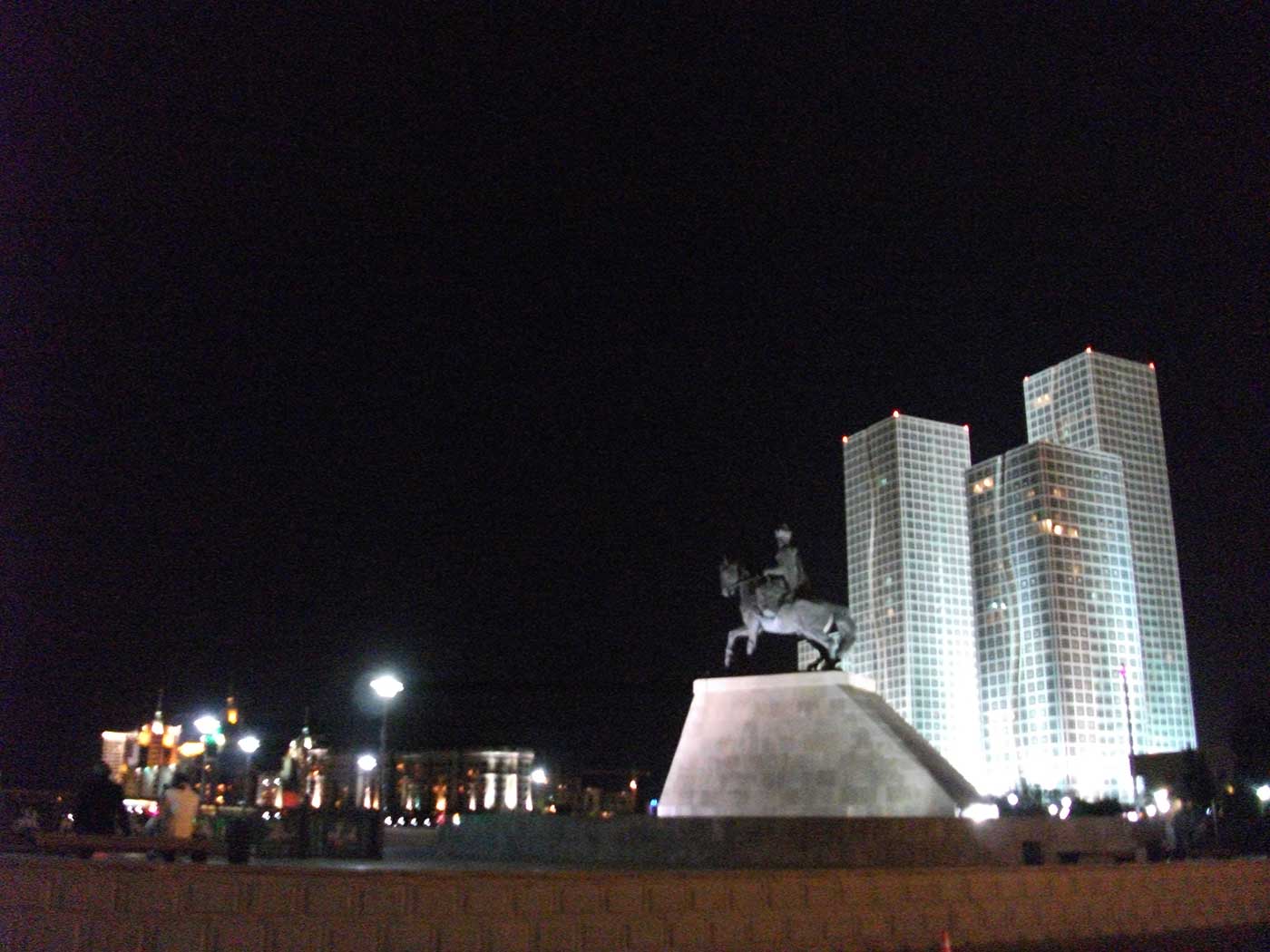COVID HUMAN ERADICATION /CULLING IS ALL FOR THE PLANNED NEW WORLD ORDER.
I HAVE COPIED THIS INFORMATION AS THERE IS NO SHARE BUTTON.
UNDERSTAND WHAT THE VACCINATION CULLING IS ALL ABOUT AND DO NOT GET VACCINATED WITH DEATH HELP THIS ECONOMICAL FORUM AND WORLD HEALTH ORGANIZATION TO ACHIEVE THEIR GOALS BY THIS NEW WORLD ORDER WHO WILL MOVE TO THIS DOMAIN IN KAZAKHASTAN.
Astana: The Illuminati Capital of Kazakhstan
31 December 2012
As the first new capital of the 21st century, the city of Astana in Kazakhstan has been received by many as a revolution in social architecture. Rising out of the barren steppe in the north of the country, this surreal capital represents the investment of billions upon billions of petrodollars; and features some of the most radical, revolutionary design the world has ever seen.
Not everybody is queueing up to welcome this city of the future, however. Critics and conspiracy theorists the world over have pointed out the rich occult symbology which seems so deeply ingrained into the aesthetics of Astana… and many are heralding this as the ‘Illuminati Capital of the World’.

Astana, Kazakhstan
Earlier this year I spent the best part of a month in and around Astana. I had heard nothing about the Illuminati theory then, and the city didn’t exactly strike me as a capital for the New World Order.
However, there is certainly something strange about Astana. While the central and business districts have been laboriously designed by some of the most prestigious architects in the world, this 15-year-old capital is still seriously lacking in residential zones. Even now, many government officials commute by plane from the old capital of Almaty. The result is the most elaborately futuristic ghost town you could imagine – and feels like walking onto the abandoned set for a 1970s sci-fi film.
The rich symbolism and peculiar structural design of Astana do raise certain questions… questions which are best answered by superimposing lightning effects over footage of the city’s more notable landmarks, as this clip by xlivescom so amply demonstrates.
I’m going to continue referring back to points made in this video clip as the report goes on; not because xlivescom is anything approaching an authoritative source of information, but rather because this video offers a concise summary of the dozens of Astana-Illuminati theories scattered across the Internet [1].
Don’t worry if you didn’t make it to the end of the video, I’m sure you get the point. While the feature certainly manage to highlight some bizarre features of the city, there is little here that can’t be understood better when you consider the history and context of Astana.
The White Tomb
Kazakh culture has its roots in nomadic traditions, and the majority of permanent settlements didn’t begin appearing here until relatively recently. In 1824 a band of Siberian Cossacks travelling across the Central Asian steppe stopped on the banks of the Ishim River, where they built what would later become an important fortress defending central south Russia. They named it ‘Akmolinsk’: the word for a Holy Shrine, translating literally as ‘White Tomb’.

The town grew into the 20th century, and Akmolinsk served as a pivotal rail depot around the time of the Russian Civil War. Under the Soviet Union Kazakhstan became a powerhouse of industry; factories, chemical plants, mining rigs and missile silos were built far and wide across the country, in addition to a number of notorious gulags.
Perhaps the cruelest of these camps was situated at Akmolinsk itself, and known as ALZHIR: the ‘Akmolinskii Camp for Wives of Traitors of the Motherland’.
Kazakhstan staked its independence after the fall of the Soviet Union in 1990; a year later, they struck oil in the southern Caspian region.

The decision to move the nation’s capital from the heavily Soviet-influenced Almaty to the small northern town now known as ‘Ak Mola’, was taken by many as a gesture of defiance on the part of the Kazakh government… although official motives included Almaty’s risk of seismic activity, its proximity to volatile foreign borders and limited space for expansion.
The move became official on 10th December 1997; and the town of Ak Mola adopted the Kazakh title of ‘Astana’, meaning ‘Capital’.
The Great Architect
To return to the suspicions levelled by xlivescom in the video above, perhaps the strongest recurring theme is that of ‘sun worship’. While a naive observer may be justified in comparing the appearance of the Bayterek Tower to some kind of sun altar, it would nevertheless be a gross misunderstanding of the monument’s true meaning.

The Bayterek is Astana’s most enduring icon, with a design based on an ancient Turkic folk tale.
Like many of Astana’s landmarks, the tower was conceived by the renowned British architect Sir Norman Foster. The golden sphere represents an egg, the pillar the ‘tree of life’. This symbolism comes from the tale of Samruk, the ‘magical bird of happiness’: a mythical being common to Persian, Iranian, Armenian, Byzantine, and a range of Turkic traditions.
Personally, I don’t have an issue with sun worship anyway – of all the things you might care to deify, the sun strikes me as a fairly natural choice. Sun worship predates any other belief or teaching in the history of human culture, and the sun and eagle emblems serve as important, historical symbols of the Kazakh race. The conspiracy theorists would have us believe that the sun is a symbol of Lucifer, and the ultimate occult icon; but the sun was nourishing all life on this planet long before Christians had invented the notion of ‘Lucifer’.
However, the comparisons which can be drawn between Astana’s city centre and the traditional layout of a masonic temple are interesting to say the least.

The Ak Orda Presidential Palace sits in the East of the city centre, at the same position as the Grand Master’s chair. President Nazarbayev’s palace is flanked on either side by vast golden pillars, which correspond neatly with the twin pillars called ‘Joachim’ and ‘Boaz’ that stand on either side of a masonic temple.
Many masonic rituals require initiates to pass between these pillars, and those with a little imagination might suggest that placing golden pillars on either side of Astana’s central Nurzhol Boulevard allows for occult workings on a grand scale [2].
While the eastern station of a masonic temple is occupied by the Grand Master (whose wisdom is often associated with Divine Light), the western position is the realm of the Senior Warden. His duties are to preside over the Lodge at times of labour, and this position could be said to represent the soul; reflecting Divine Light the same way the moon reflects that of the sun [3].

It’s hard to draw a parallel between the apparent sun symbology of the Bayterek Tower and the moon associations which characterise the corresponding position of the masonic lodge. Unless of course we look even further west… considering the Bayterek as the mid-point of the temple then, at the far western end of Astana’s central plaza we find the Khan Shatyr leisure complex. I’m not sure that this is any easier to compare to the masonic position of Senior Warden though. Perhaps it’s fair to conclude that this masonic parallel is merely superficial and aesthetic, rather than intended to serve as a functional reconstruction.
A labelled overhead photo of the centre of Astana shows the layout more clearly, with the linear orientation of the Bayterek Tower, Nazarbayev’s Palace and the Pyramid of Peace in the far East. The graphic below comes from David Icke‘s website.

Another key point to consider might suggest that any similarities between Astana’s city centre and a masonic temple are no more than eccentric, provocative design: just a small amount of research into the history of freemasonry will reveal that the Craft was heavily persecuted by the Soviets; as well as remaining to this day strictly illegal in most of the Islamic world. I just don’t see it catching on in Kazakhstan, a predominantly muslim country which is still struggling to shake off the ghosts of its recent communist past.

The Eye in the Pyramid
That brings us to one of the more striking buildings on Astana’s skyline, the 77m tall pyramid known as the Palace of Peace and Reconciliation.
Theorists such as xlivescom tend to pick up on this one structure more than any other, when presenting Astana as the ultimate Illuminati capital. “Much more than being a tourist attraction,” they claim, the pyramid “is a representation of the philosophy of the initiates.” Further associations are drawn between the pyramidal design and the teachings of figures such as Pythagoras or even Manly P. Hall. While these include some interesting observations, it does not follow that Astana’s Palace of Peace and Reconciliation (or ‘Palace of Peace and Accord’ as it is sometimes translated) was necessarily built to embody these same esoteric ideals.

As a design concept, it seemed no stranger to me than the Louvre in Paris or the Las Vegas Luxor Hotel… but then again, countless websites already argue the case for an Illuminati agenda behind those buildings too. It seems unacceptable to believe that an architect ever chose a pyramid design simply to create a dramatic effect.
A great deal of fuss is also made of the Palace’s interior, where the Kazakh congress meets around a circular ‘sun table’. Directly beneath this is the city’s new opera hall, and xlivescom notes with suspicion that the former is considerably more ‘luminous’ than the latter. Perhaps this genuinely does symbolise the path to godliness along which the Kazakh elite are treading… or maybe theatres simply work better when the house lights are turned off. You decide.


The pyramid’s apex is decorated with dove motifs. If you played the video to its end you’ll already know that these doves appear, “representing peace, which will result in the unification of the world governments and religions in the NEW WORLD ORDER.” You will also note that the image of a sun appearing on the glass ceiling represents Satan, and not the actual sun itself.
As for the All-Seeing Eye in this pyramid, President Nursultan Nazarbayev himself seems an unlikely Illuminati pawn. This old-school Soviet joined the Kazakh Communist Party in 1962, working his way up to the position of First Secretary by 1989. He stands today as Kazakhstan’s first – and only – democratically elected president.
There have been many criticisms of Nazarbayev’s seemingly unshakable rule; a 2004 study by the Transparency International organisation declared Kazakhstan to be suffering from “rampant corruption”, and civil activists both inside and outside of Kazakhstan cite instances of “human rights abuses”.

The Nazarbayev family has been investigated in the past for allegations of money laundering, bribery and assassination, while former ministers of the Kazakh government claim Nazarbayev has accepted millions of US dollars in bribes, while discretely transferring at least $1 billion of oil profits into his personal account. None of these allegations have been proven however, and Nazarbayev continues to gain international regard for his work in dismantling former Soviet nuclear weapons, as well as pushing to see more women in government and politics.
It is worth noting that the former allegations couldn’t be further from the modus operandi of the theoretical Western Illuminati. Rather than a sophisticated and secretive cartel controlling society through the worlds of finance and media, Kazakhstan’s perceived problems have perhaps been more accurately surmised by references to a “Soviet bully-boy mentality”; for a more accurate parallel to this lavishly opulent capital built by a charismatic-yet-overbearing leader figure, one should look East rather than West; toward the North Korean capital of Pyongyang, for example.
A New World Order
One very good question which ought to be asked at this point, is why would a secret ruling elite put so much time and money into designing a capital city which reveals their purposes in such a spectacularly un-secretive way? As is often the case however, the conspiracy theorists have an answer for this as well.

Externalisation of the Hierarchy was the title of a 1957 book by British writer and theosophist Alice A. Bailey; put very simply, the ‘externalisation’ is the process by which the masses are gently prepared for the future, as those controlling the world from behind the scenes gradually make themselves known through increasingly explicit signs [4].
I never made it to the top of the Bayterek, and nor did I step inside the Palace of Peace and Accord. However, I did spend a lot of time getting to know the people of Astana, and seeing their city as they see it.
I visited a range of museums, restaurants and bars, and explored the extensive green park beside the Ishim River. The city has a lively nightlife, and much of the ex-pat culture in Astana is centred around the ‘Guns N’ Roses Pub-Grill’. The city’s modern entertainment complex is housed inside the Khan Shatyr, or ‘Khan’s Marquee’. This vast, translucent tent-like structure covers an area greater than 10 football stadiums, with floor upon floor of shops, entertainment venues and sports facilities. On the top floor of the Khan Shatyr, you’ll find a tropical beach – complete with real sand, convincing palm trees and a wave machine.


I even had the chance to take in a performance of ‘Coppélia‘ by the Kazakh National Ballet; the story of a young man who falls hopelessly in love with an automaton created by a cruel inventor, only to grow increasingly isolated from the real world around him. (Don’t worry, the irony wasn’t lost on me – this is Monarch Programming at its finest.)
There is a lot to like about Kazakhstan, and I really warmed to the Kazakh people. In my considered opinion, the seemingly blatant and oft-reported Illuminati symbolism of Astana is no more than the superficial veneer of an adventurous modern capital: Astana is what happens when an eccentric and powerful ruler hires a team of world famous architects to build the ultimate capital city on an unlimited budget.

Sir Norman Foster, Kisho Kurokawa and other architects involved in this multibillion dollar project have trawled through the history books for their inspiration, incorporating elements of Greek, Egyptian and Arabic design [5].
Astana brings ancient mythologies to life, whilst providing a canvas for some of the world’s most striking contemporary architecture… but to attribute this unique design to a secret society hellbent on establishing a New World Order, is just plain silly.


Notes
[1] You can find some more sources of Astana-Illuminati theories at Vigilant Citizen, Conspiracy Archive and Illuminati Italia. Do take the time to check some of these out, as they’re often hilarious.
[2] See for example The Occult Ritual Of The Gloriana – a fascinating account of the esoteric subtext to Queen Elizabeth’s Diamond Jubilee Pageant.
[3] I’d like to thank Burning Taper for the excellent source of information on masonic symbology.
[4] Alright, so I put it very, very simply. While the concept of the ‘externalisation of the hierarchy’ is often used to illustrate the same New World Order theory presented here, Bailey’s original work (which she claimed to be a transcription of an ancient body of wisdom dating back as far as Atlantis), focussed more on a messianic hierarchy regaining shape and substance until it is able to “function openly upon the physical plane”.
[5] Some people have taken the analysis deeper still, looking at the structural layout of the city in detail; and drawing parallels with the ‘sacred geometry’ of freemasonry. Curious? You can check out this video and decide for yourself.




Comments
Post a Comment